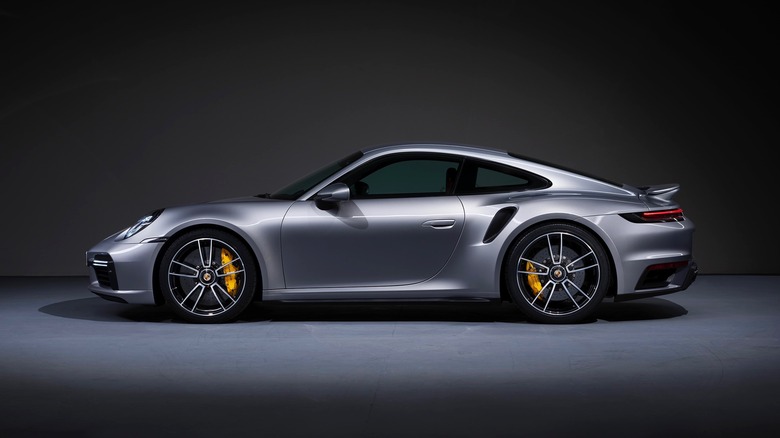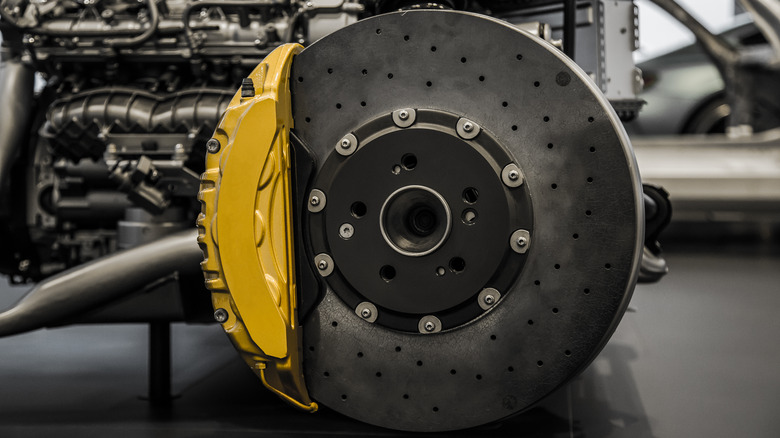What Are Carbon Ceramic Brakes And Why Are They Used In Supercars?
Carbon ceramic brakes are an alternative high-performance type of braking system, as opposed to the more conventional setup featuring brake discs made of steel or iron. Carbon ceramic brakes provide an extra margin of performance and safety for the drivers who use them. Carbon ceramic brake discs consist of a core made of ceramic material with carbon fiber reinforcement. This core, made of carbon and silicon, is then coated with additional ceramic material to last longer and provide more efficient braking.
The first notable use of carbon ceramic materials was for the very expensive tiles on the underside of the Space Shuttle, where they were used to resist the high temperatures produced by the intense heat generated by re-entry into the Earth's atmosphere. The first braking system to incorporate carbon materials (using graphite-reinforced carbon fiber) was the Concorde airliner in 1976. By the end of the 1970s, Formula 1 race cars had also adopted this advanced braking technology.
The first street-legal car to have carbon ceramic brakes was the 2000 Mercedes-Benz CL 55 AMG F1 Edition. Based on that year's F1 safety car, this limited edition version of the Mercedes-Benz CL 55 AMG, of which only 55 were made, had special carbon ceramic brakes, utilizing eight-piston calipers from Brembo. Other notable milestones in early carbon ceramic brake history include the 2001 launch of the Porsche 911 GT2 and 911 Turbo fitted with carbon ceramic discs, followed by the introduction of the Ferrari Enzo in 2002, which was the first production car to be equipped with ceramic composite material carbon-ceramic discs.
Why are carbon ceramic brakes used in supercars?
Today, carbon ceramic brakes are used not only on supercars, but also on race cars, airplanes, and military vehicles. This is because all of these vehicles have the need for the highest braking performance. The improvements that drivers of supercars most appreciate when using carbon ceramic brakes include faster braking response, resistance to brake fade, light weight, and a longer life. Supercars that are capable of speeds approaching and even exceeding 200 mph, especially those intended for use on a racetrack, will benefit from being equipped with carbon ceramic brakes.
Another reason that carbon ceramic brakes are found on supercars is that it is a very expensive braking system, so the cost is more acceptable to those drivers already willing to pay the high price required for a vehicle capable of needing the ultimate in stopping power. For example, the cost of a carbon ceramic brake upgrade on a car like the Porsche 911 Turbo is $9,650, which is about 5% of the entire Turbo's $197,200 MSRP. That's not so much more for the additional capabilities and resulting peace of mind that carbon ceramic brakes provide.

